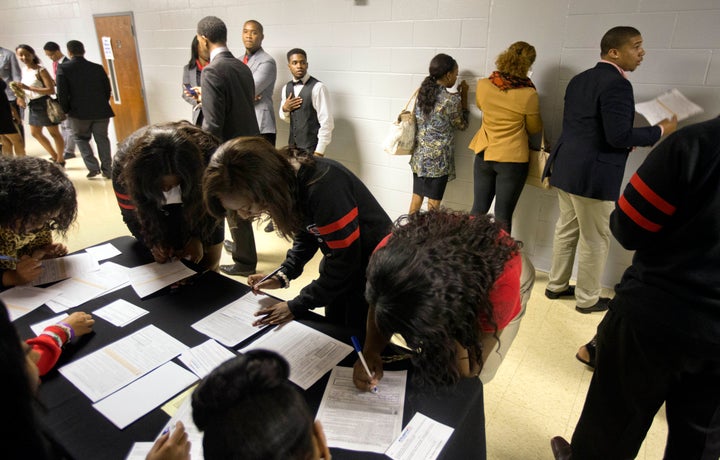
I don't need to tell you that the 47 percent has been in the news a lot lately.
Apparently there are 47 percent of Americans who don't pay the Federal Income Tax (they pay all kinds of other taxes including payroll, sales, property, etc.). The people that make up the 47 percent are a pretty diverse bunch -- they are the elderly (most of whom paid into the system all their lives), the working poor, veterans and students working their way through college. I'm actually going to propose that we put the politics of this aside for a moment. What I want to talk about is far more important: Democracy.
What I've found interesting is that in all the articles, blog posts, tweets and news reports about this is that I haven't seen any that mention the obvious point that not all of the people that make up the 47 percent vote.
In a weird way, our punditry and news media have been engaged all week in a conversation about some idealized America where every single American votes.
Let me make an obvious point: Not all Americans vote.
I realize we all actually know that -- but, strangely, the conversation in the last week has ignored that basic point.
The second (also obvious) point is that the 47 percent fairly well describes the universe of people who are underrepresented in elections because they vote at much lower rates. Student, young people, people of color, elderly and the working poor voter turnout are all below the national average.
In part those people vote in lower numbers because of the structural barriers to voting. Our voting and election system structurally excludes a set of folks. And the 47 percent, as a group, face a greater number of these structural and cultural barriers. For example the working poor and young people move residences more often -- so they don't always update their registration or know where their new polling place is. Lower income workers tend to have less flexible work and life schedules. The elderly have difficulty getting to the polls. The young, new Americans and the very elderly may not always have the correct identification now required in some states.
These and other barriers add up to push down voter participation. One important way to turn that around is through voter registration campaigns.
Today, September 25, thousands of people across the country and hundreds here in Colorado are celebrating National Voter Registration Day. This single day of coordinated field, online and media efforts is building awareness of voter registration opportunities -- allowing us to reach tens of thousands of voters or more who we could not reach otherwise.
We know people who register to vote are far more likely to turnout to vote. For example in 2008, of the more than 11,000 young people New Era Colorado registered to vote, 88.5 percent of them actually voted. The first goal in getting the 47 percent to actually vote is registering them or updating their registration.
But we need to go beyond that.
Once National Voter Registration Day and the 2012 election are over, it'll be time for our newly elected leaders to improve our voting system and remove some of these structural barriers. Same day voter registration, motor voter, vote by mail, online voter registration, improved ballot design and other reforms are important ways to get closer to full voter participation.
In Colorado we can start by not only instituting policies like same day registration, but also by making our procedures uniform from one election to the next. Changing the rules about who gets a mail-in ballot, where to vote, and which voters are "inactive," only serve to confuse voters. And when we make these reforms, the litmus test should be "will this increase the number of people who cast a ballot?"
If we're able to successfully push forward these reforms, the idealized voting numbers our media has been discussing for the last week could become a reality. Until then we'll be working hard to register as many Americans as possible.